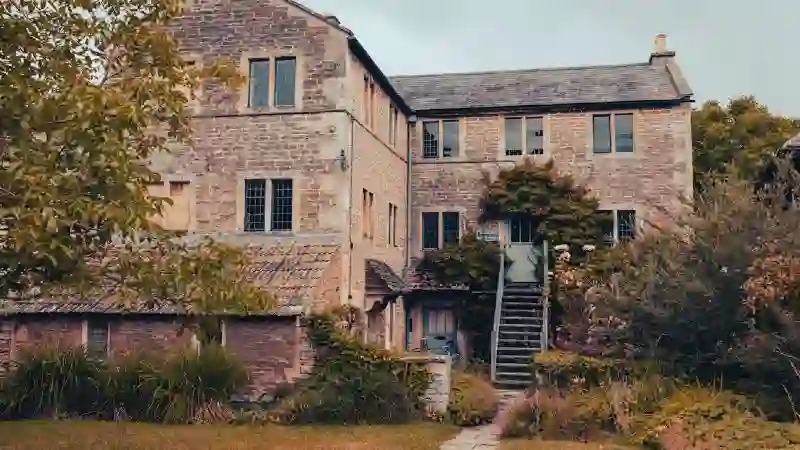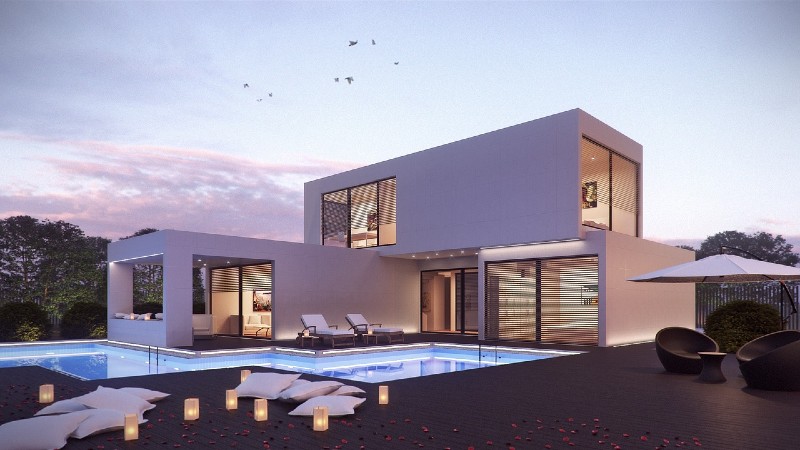Disclosure: This post may contain affiliate links, meaning we get a commission if you decide to make a purchase through our links, at no cost to you. Please read our disclosure for more info.
Buying a vintage home is a dream for many due to its charm and history. However, these dwellings present issues that need careful analysis and planning.
Structural flaws, outmoded systems, and concealed health dangers are all possible issues. Understanding these problems before purchasing can save time, money, and frustration.
In this article, we explore five common challenges when purchasing a vintage house and how to address them.
In This Post:
Structural Issues
Older homes often have structural issues such as weakened foundations, sagging floors, or cracked walls. These problems worsen over time, causing more damage to the overall stability of the home.
The National Association of REALTORS emphasizes that diagonal cracks should never be overlooked, as they signal possible foundation settlement and structural problems. These cracks typically run at a 30 to 70-degree angle from corner to corner. Early identification and competent action can help prevent significant injury.
Detecting these issues early can save buyers from expensive repairs down the line. It’s crucial to schedule a thorough inspection to evaluate the home’s structural integrity before purchasing. A trained contractor or engineer can offer important advice and recommendations on essential repairs.
Repairs to the foundation or structural components might be costly and require skilled assistance. Buyers should ensure that the estimated cost of repairs fits within their budget and expectations.
How Can I Prevent Future Foundation Problems?
Preventing future foundation problems starts with maintaining proper drainage around the house and ensuring downspouts direct water away from the foundation. Regular inspections also help identify small issues before they escalate. Additionally, addressing soil movement and moisture issues can help protect the foundation in the long term.
Outdated Electrical and Plumbing Systems
Older homes frequently feature outdated electrical and plumbing systems that don’t meet modern safety standards. Electrical systems may lack the capacity to support modern appliances, posing a potential fire risk. Additionally, old plumbing systems, such as lead pipes or galvanized steel, can corrode and lead to leaks.
Environmental Policy Innovation Center states that galvanized pipes are iron or steel pipes coated in zinc to prevent rust. Homes built in the 1960s commonly used galvanized pipes, sometimes containing lead levels of 2%. Lead concentration was reduced to 0.25% in January 2014 under the Reduction of Lead in Drinking Water Act.
Replacing these systems can be costly and may require permits, inspections, and professional help. Buyers should have a licensed electrician and plumber assess the home to identify potential risks.
It’s important to understand the costs associated with updating these systems to meet safety standards. Proper upgrades can ensure the home is safe and functional for modern living.
What Is the Cost of Updating Plumbing in an Old Home?
The cost of updating plumbing in a vintage home varies depending on the house size and system complexity. Replacing existing pipes or installing new systems can cost a few thousand to tens of thousands of dollars. Working with a certified plumber to obtain a thorough estimate is critical for budgeting.
Limited Energy Efficiency
Vintage houses are often less energy-efficient than modern homes, leading to higher utility bills. Old windows and insufficient insulation contribute to drafts and temperature fluctuations, reducing the home’s comfort.
Additionally, outdated heating and cooling systems struggle to keep the home at a consistent temperature. Replacing windows, adding insulation, and upgrading HVAC systems can improve energy efficiency and comfort. However, these upgrades come with a significant financial investment that must be factored into the budget.
Buyers should assess the long-term savings and benefits of improving energy efficiency when purchasing a vintage property. These improvements can enhance the home’s value and reduce future utility costs.
What Are the Benefits of Improving Energy Efficiency?
Improving energy efficiency has various advantages, including lower utility costs, better comfort, and higher house value. It also makes the home more environmentally friendly by reducing your carbon footprint. The long-term benefits from energy-efficient modifications frequently surpass the initial cost of new systems and materials.
Presence of Asbestos
Asbestos is common in vintage homes, posing serious health risks to residents. Asbestos was widely used for insulation and fireproofing in homes built before 1978. When asbestos fibers are disturbed, they become airborne and cause respiratory problems, including lung illness.
According to TorHoerman law, people who developed these illnesses as a result of asbestos exposure have filed lawsuits. An asbestosis lawyer can assist sufferers in navigating the complicated legal system and obtaining compensation for their losses. Many of these lawsuits target companies or property owners responsible for exposing individuals to asbestos without warning.
In February 2024, the Lawsuit Information Center reported that the Texas appellate court revived a lawsuit against Howmet Aerospace. The lawsuit alleges that asbestos exposure caused a woman’s death. The court found substantial evidence linking her asbestosis to laundering her husband’s asbestos-contaminated work clothes.
Expert testimony confirmed that the exposure, stemming from his work at Alcoa, was a significant cause of her death. An asbestosis lawyer could assist victims in this case, ensuring proper legal representation and compensation.
Buyers should request environmental assessments to identify the presence of asbestos before purchasing a vintage home. These remediation costs can be substantial and should be factored into the overall home-buying budget.
How Expensive Is Asbestos Removal?
Asbestos removal can be quite expensive, often ranging from $1,500 to $3,000 or more, depending on the area affected. The price depends on the extent of contamination and accessibility of the materials to be removed. It’s important to get multiple quotes and assess the impact on your overall renovation budget.
Expensive Renovation and Maintenance Costs
Vintage homes often require expensive renovations and ongoing maintenance to remain functional and appealing. From roof repairs to foundation work, the costs of restoring and maintaining an old home can add up quickly.
Family Handyman mentions that historic renovations often cost about the same as building a high-end new home. On average, expenses run around $475 per square foot for these projects. This price includes the necessary updates to bring the home up to modern standards.
While some buyers may enjoy the challenge of restoring a vintage home, the financial commitment can be overwhelming. Common maintenance issues include plumbing repairs, electrical upgrades, and structural fixes. Regular upkeep may also be more frequent in older homes, increasing the overall cost of ownership.
Buyers should budget for these expenses and be prepared for the financial responsibilities that come with maintaining an older property.
How Do I Manage Ongoing Maintenance for an Old Home?
Managing ongoing maintenance for an old home involves setting aside funds for routine repairs and inspections. Set up a maintenance program to inspect important sections such as the roof, plumbing, and HVAC system. Addressing minor faults regularly can help prevent larger, more expensive repairs in the future.
Buying a vintage home is exciting, offering unique charm and character. However, it’s essential to approach the purchase with realistic expectations. Thorough inspections and environmental assessments are key to identifying potential issues like structural damage or outdated systems. Renovations can be costly, but strategic budgeting helps manage these expenses.
Many older homes have hidden hazards, including asbestos, which require proper attention. By balancing appreciation for historical value with practical planning, you can enjoy your dream home without unexpected surprises. Ultimately, purchasing a vintage house is a rewarding journey with careful consideration of all potential challenges.



